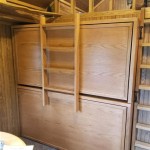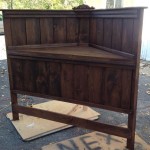What Is the Purpose of Bed Rails?
Bed rails, also known as bed side rails, are safety devices designed to prevent falls from beds, particularly for individuals with mobility impairments or those at risk of rolling out of bed during sleep. They are typically made of metal, wood, or plastic and attach to the sides of the bed frame. Bed rails provide a barrier along the edges of the bed, offering support and security for the user. While primarily designed for individuals with mobility challenges, bed rails can also be beneficial for other groups, such as children or individuals with cognitive impairments.
Protecting Against Falls
The primary purpose of bed rails is to prevent falls from bed. They serve as a physical barrier that restricts the user's movement, preventing them from rolling or slipping out of bed. This is especially important for individuals with conditions such as dementia, stroke, or Parkinson's disease, who may have difficulty maintaining their balance or controlling their movements during sleep. Bed rails provide an extra layer of safety, reducing the risk of injuries that can occur from falls.
Enhancing Independence and Comfort
Beyond safety, bed rails can also contribute to a sense of independence and comfort for the user. Individuals who have difficulty getting in and out of bed can use bed rails for support and leverage, making it easier to reposition themselves in bed. This can enhance their sense of autonomy and reduce the need for assistance. Bed rails can also help to reduce anxiety and fear of falling, allowing users to feel more secure and at ease in their own beds.
Supporting Medical Needs
Bed rails can also be used to support specific medical needs. For instance, individuals receiving intravenous (IV) therapy or oxygen may require bed rails to keep their lines and tubes secure during sleep. Bed rails can also help to prevent patients from accidentally dislodging medical devices or equipment, ensuring that they receive the necessary treatment without interruption.
Types of Bed Rails
Bed rails come in various styles and sizes to accommodate different bed types and user needs. Some common types include:
- Full-length bed rails: These extend the entire length of the bed, offering maximum protection and support. They are often used for individuals with significant mobility limitations.
- Half-length bed rails: These cover only a portion of the bed's length, typically one side. They are suitable for individuals who may be at risk of falling from one side only.
- Adjustable bed rails: These can be raised or lowered to adjust the height of the barrier, offering flexibility and comfort. They are particularly useful for users who may have difficulty getting in and out of bed at different times.
Choosing the Right Bed Rails
When choosing bed rails, it is essential to consider the individual's needs and the specific features of the rails. Factors to consider include:
- Height and length: Ensure that the bed rails are the appropriate height and length for the user's bed and their movement capabilities.
- Material: Choose a material that is durable and comfortable, such as metal, wood, or plastic.
- Ease of use: Select bed rails that are easy to adjust and operate, minimizing potential frustration for the user.
- Safety features: Look for bed rails with features such as anti-slip surfaces or padding to reduce the risk of injury.
Consulting a Healthcare Professional
If you are considering using bed rails for yourself or a loved one, it is essential to consult with a healthcare professional. They can assess the individual's needs and recommend the most appropriate type of bed rails. They can also provide guidance on proper installation, use, and maintenance of bed rails to ensure safety and effectiveness.
Bed rails can be a valuable safety device for individuals who are at risk of falls from bed. They provide a barrier that prevents accidental falls, enhancing independence, comfort, and medical care. By understanding the different types of bed rails and consulting with healthcare professionals, individuals can choose the most suitable option to meet their specific needs and improve their overall well-being.

The Importance Of Bed Rails For Support Burt S Rx

What Is The Purpose Of Truck Bed Rails Backrack

Bed Safety Rails 4 Important Things To Know Homecare Hospital Beds

Sleep Safe Home Bed Rail Gms Rehabilitation

Bedrail Injuries In Nursing Homes How These Happen

Standers Bed Rails Performance Health

Cpsc Recalls Certain Portable Bed Rails Safety Devices Linked To S Npr

Able Life Bedside Extendable Bed Rail For Elderly Adjustable Safety Handle Com

Carex Homestyle Bed Rails Adjustable Height Width P558c0 Vitality Medical

Stander Safety Bed Rail 30 W 23 H 3 Gap Between Rails Cardinal Health Accessibility Medical Equipment







